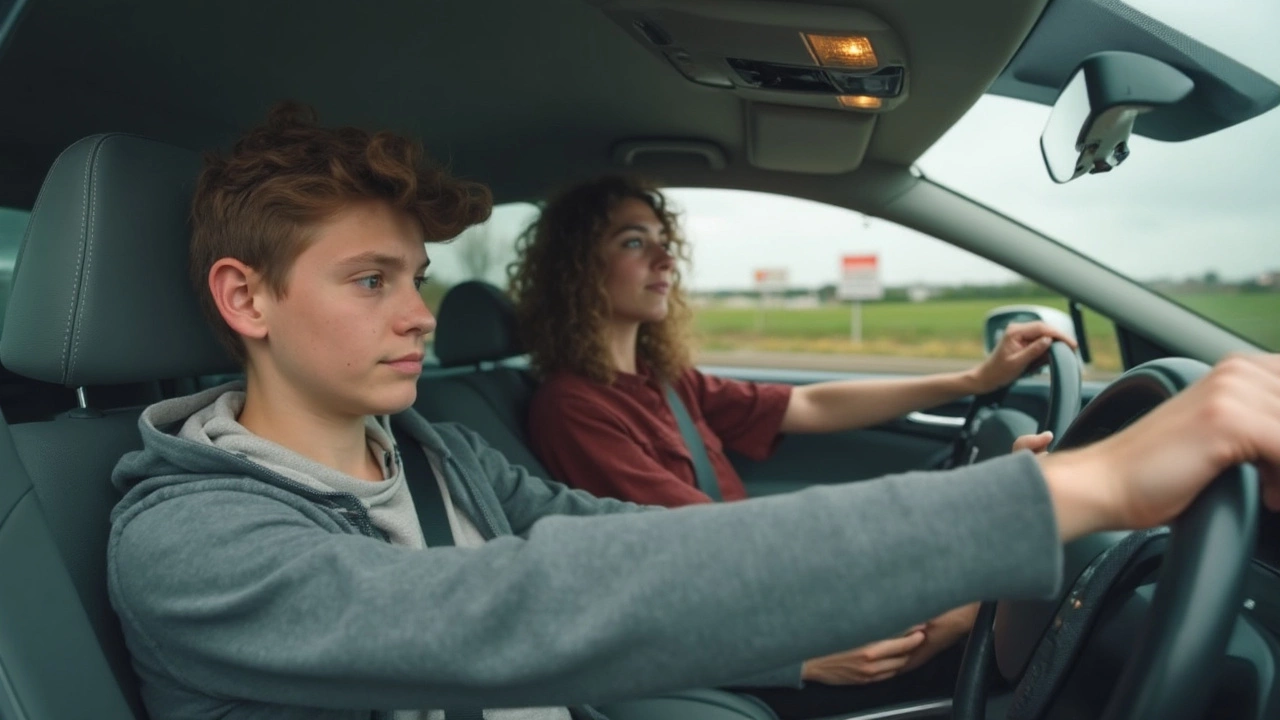Motorway Rules Every HGV Driver Must Know
If you’re behind the wheel of a heavy goods vehicle, the motorway feels like a different world. The speed, the traffic flow and the rules are stricter than on ordinary roads. Ignoring them can cost you a fine, a licence point, or even an accident. This guide breaks down the most important motorway rules for HGV drivers in simple, bite‑size pieces.
Speed Limits and When to Adjust
On UK motorways the standard speed limit for HGVs over 7.5 tonnes is 60 mph. Some sections have a reduced limit of 50 mph, especially near junctions or in construction zones. Look out for the signs – they’re bigger and often have a heavy‑vehicle symbol.
Even if the limit says 60 mph, you may need to go slower. Bad weather, heavy traffic, or a fully loaded vehicle can affect braking distance. The rule of thumb is to keep a safe gap of at least two seconds behind the vehicle ahead. If you can’t maintain that, slow down.
Never exceed the limit to catch up with faster traffic. It’s not worth the risk of a penalty or a crash. If you find yourself stuck behind a faster car, stay in your lane and wait for a safe overtaking opportunity.
Lane Discipline and Overtaking
HGVs must stay in the left‑hand lane unless they are overtaking or preparing to turn off. Using the middle or right lane for normal cruising can lead to a fine. When you need to overtake, signal well in advance, check mirrors, and only move when you have a clear, safe gap.
Avoid sudden lane changes. Other drivers expect larger vehicles to move predictably. If you need to shift lanes, give at least a 5‑second warning with your indicators.
Overtaking on a motorway is allowed only when the road ahead is clear and you can complete the manoeuvre without cutting back into the left lane too early. Do not overtake on the hard shoulder – it’s illegal and dangerous.
Rest Periods and Driver Fatigue
Fatigue is the number one cause of HGV accidents on motorways. The law requires a 45‑minute break after 4.5 hours of driving. Use a service area or rest stop to stretch, eat and hydrate.
Keep a log of your driving hours. Modern tachographs make this easy, but you still need to stay aware of your limits. If you feel tired, pull over safely and take a short nap – it’s better than pushing through.
Vehicle Checks Before You Merge
Before hitting the motorway, do a quick visual check: brakes, lights, mirrors, and tyre pressure. Make sure your load is secured and within the legal dimensions. A loose load can shift at high speeds and cause loss of control.
Test your windscreen wipers and ensure the headlights are clean. Poor visibility on a fast road is a recipe for disaster.
Emergency Situations
If you need to stop on a motorway, do it on the hard shoulder, not the carriageway. Turn on your emergency blinkers, raise the warning triangle at the prescribed distance (usually 45 m for HGVs), and call the emergency services if necessary.
When re‑joining traffic, accelerate gently and merge only when you have a clear gap. Remember, other drivers expect you to be slower, so give them plenty of space.
Sticking to these rules will keep you legal, reduce the chance of accidents, and help you pass your HGV licence tests with confidence. Follow the signs, respect the limits, and always drive with safety first.
- May 23 2025
- 0 Comments
- Rowan Cavendish
Can Learner Drivers Go on the Motorway? Essential Info for Pass Plus
Find out if learner drivers can use the motorway and what rules have changed since 2018. Learn how Pass Plus courses involve motorway driving and what benefits they offer. Discover tips for staying safe and confident on these faster roads. Get clear, straightforward answers to questions every new driver has. Tackle the motorway without guessing or second-guessing.
- Driving Lessons (41)
- HGV Training (31)
- Driving Test Tips (31)
- Driving Test Booking (26)
- Driving Licence Renewal (23)
- Driving Theory Test (21)
- Pass Plus Course (15)
- Driving Tips (15)
- Intensive Driving Course (15)
- Driver Licensing (14)
Categories
- December 2025 (12)
- November 2025 (13)
- October 2025 (21)
- September 2025 (5)
- August 2025 (8)
- July 2025 (30)
- June 2025 (30)
- May 2025 (30)
- April 2025 (31)
- March 2025 (30)
- February 2025 (28)
- January 2025 (34)
Archives
- driving lessons
- driving test
- driving tips
- intensive driving course
- driving test tips
- HGV training
- learn to drive
- driving theory test
- driver training
- driving test booking
- pass driving test
- HGV driving
- road safety
- driving license renewal
- Virginia driving test
- learner drivers
- safe driving
- Virginia driver's license
- driving license
- learning to drive

